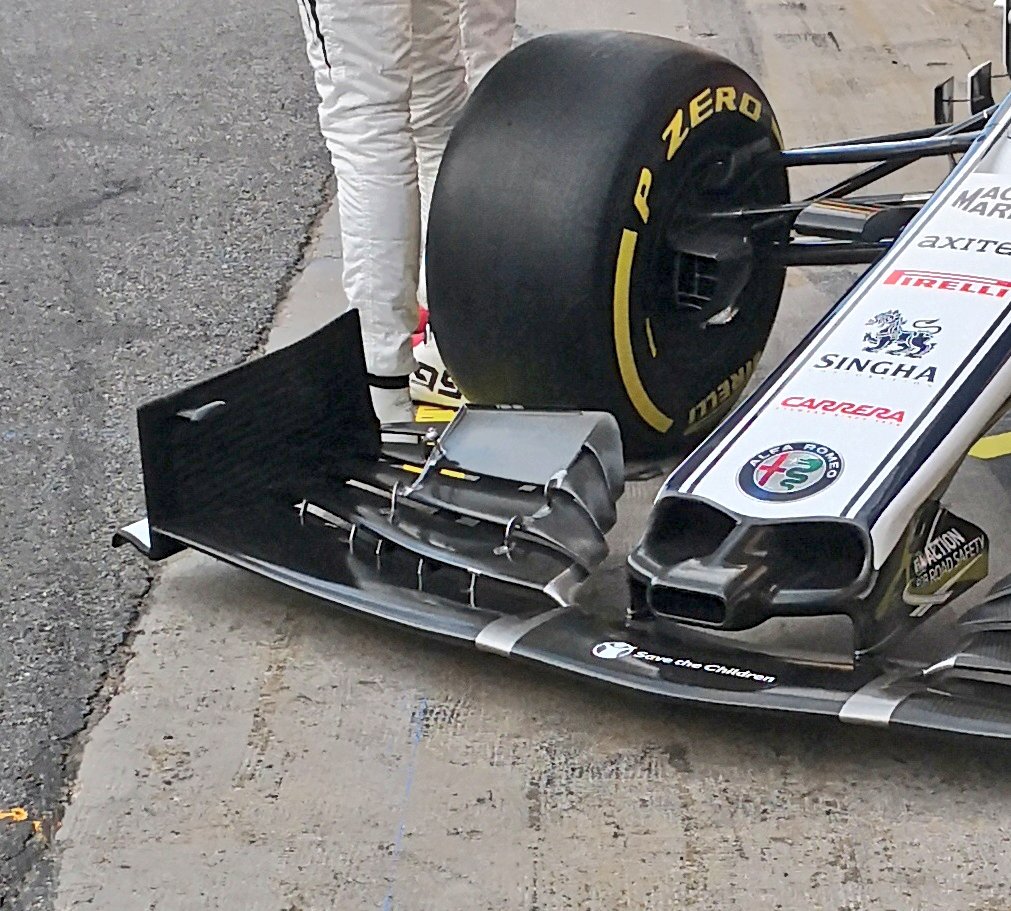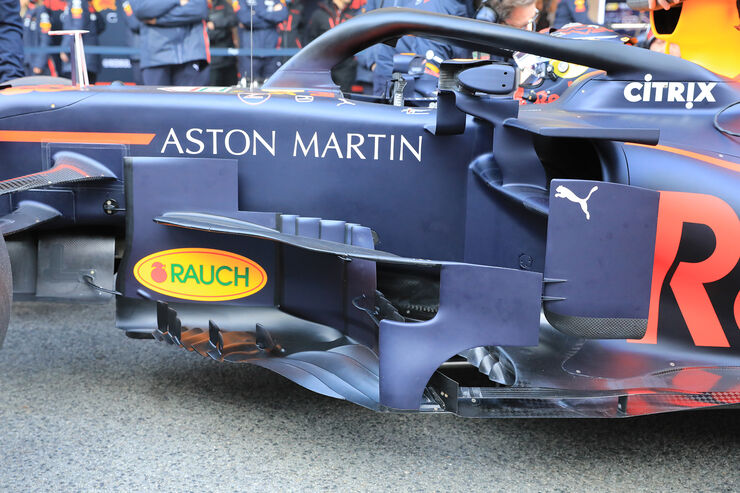McMika98 wrote: ↑17 Feb 2019, 00:05
jjn9128 wrote: ↑16 Feb 2019, 21:27

Downforce isn't lost because there are fewer elements on the front wing...
The front and rear wing planform areas are bigger as well as their potential camber, so they are both capable of generating more absolute force. Where the teams may have lost out is that in losing the cascades and upper flaps the front tyre wake will be impacting more on the bargeboards and underbody, so they have to use some of that potential force to recreate the outwashing which is more beneficial to the total car downforce. It also has to be balanced out.
Having an element place horizontally has little contribution to lift even thought it might have 10 times the surface area. The multi element wing stack that mercedes pioneered were at very high angle of attack generating tremendous downforce. As the pictures shows the first two elements in current cars probably produce less than 20% of the downforce even thought it might be 80% of net surface area. Outwash effect is another matter but clearly team now have to compromise between the two unlike last year.
There is obviously a debate going on on 2 lanes: one where downforce is measured against potential, and one where it is measured against what teams generally are running.
Yes, the outboard rear elements will not generate as much as downforce (although I have to be careful with stating because the wing still acts in ground effect). But, that doesn't mean they couldn't add more downforce. Of course they could have, and of course did the front wings of last year ran more downforce, but only because there was more rear downforce. This year there is less rear downforce, therefore they have to remove frontal downforce as well. Frontal downforce production is not directly limited because of the regulations changes, but indirectly because the front wing can be less used to help the rear generate downforce, therefore the front wing has to be trimmed down. As jjn9128 stated, the box for the front wing has increase in volume and surface, so the wing elements can be bigger.






